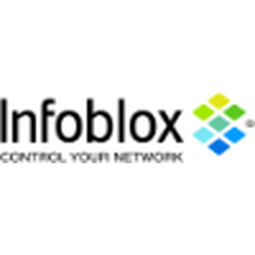Customer Company Size
Large Corporate
Region
- America
Country
- United States
Product
- Infoblox Grid™
- Infoblox appliances
Tech Stack
- DNS Management
- DHCP Management
- Infoblox Grid™ Technology
Implementation Scale
- Enterprise-wide Deployment
Impact Metrics
- Cost Savings
- Customer Satisfaction
- Productivity Improvements
Technology Category
- Application Infrastructure & Middleware - API Integration & Management
- Networks & Connectivity - Network Management & Analysis Software
Applicable Industries
- Telecommunications
Applicable Functions
- Business Operation
Use Cases
- Infrastructure Inspection
Services
- System Integration
About The Customer
The customer is a North American integrated provider of mobile and wireline services—including mobile voice, data, and broadband Internet services—to consumers, businesses, and government agencies. As a large corporate entity, the company operates across multiple regions, providing essential communication services that are critical for both personal and professional use. The company is known for its extensive network infrastructure and its commitment to delivering high-quality service to a diverse customer base, including individual consumers, small and medium-sized enterprises, and large governmental organizations. The company’s operations are supported by a robust IT infrastructure that requires efficient management of DNS and DHCP systems to ensure seamless service delivery and operational efficiency.
The Challenge
The parent group was consolidating operating companies and needed to merge various disparate IT systems—including its DNS and DHCP systems. Two separate Alcatel-Lucent VitalQIP systems were in use to manage DNS for multiple wireline networks and for multiple Microsoft and BIND DNS systems on the mobile network. The overall combination of disparate DNS systems left the provider with no synergies across the company and no common solution for IP address management. Change management was a major challenge, since methods and procedures were different on each of the legacy networks. Day-to-day operating processes like server OS patches, security updates, and software upgrades were different in each organization—and all were manual and error-prone, involving multiple operations teams, organizations, and server platforms for internal and web-facing DNS as well as for DHCP. The service provider decided to use the reorganization as an opportunity to rationalize its DNS systems and bring in a more consistent and coordinated approach, with the goal of achieving operational efficiencies, cost savings, and performance improvements that would benefit users.
The Solution
In order to replace the highly distributed architecture across multiple entities, the operator consolidated its DNS systems into three regional data centers and tuned the architecture to reduce DNS latency while eliminating remote DNS servers in twelve regions. By adopting Infoblox appliances, the operator was able to eliminate the many hardware and software integration issues and to eliminate the need for multiple server OS and security patches. Infoblox helped the IT team to adopt a total of more than 50 Infoblox appliances and a best-practices design approach, including: High-availability pairs of appliances at every location, Dedicated client DHCP and DNS resolvers in each datacenter, Dedicated DNS resolvers for network devices and servers in each datacenter, Dedicated resolvers in DMZs for network devices and systems within protected security zones in each datacenter.
Operational Impact
Quantitative Benefit

Case Study missing?
Start adding your own!
Register with your work email and create a new case study profile for your business.
Related Case Studies.

Case Study
Vodafone Hosted On AWS
Vodafone found that traffic for the applications peak during the four-month period when the international cricket season is at its height in Australia. During the 2011/2012 cricket season, 700,000 consumers downloaded the Cricket Live Australia application. Vodafone needed to be able to meet customer demand, but didn’t want to invest in additional resources that would be underutilized during cricket’s off-season.

Case Study
SKT, Construction of Smart Office Environment
SK T-Tower is the headquarters of SK Telecom. Inside the building, different types of mobile devices, such as laptops, smartphones and tablets, are in use, and with the increase in WLAN traffic and the use of quality multimedia data, the volume of wireless data sees an explosive growth. Users want limitless Internet access in various places in addition to designated areas.











